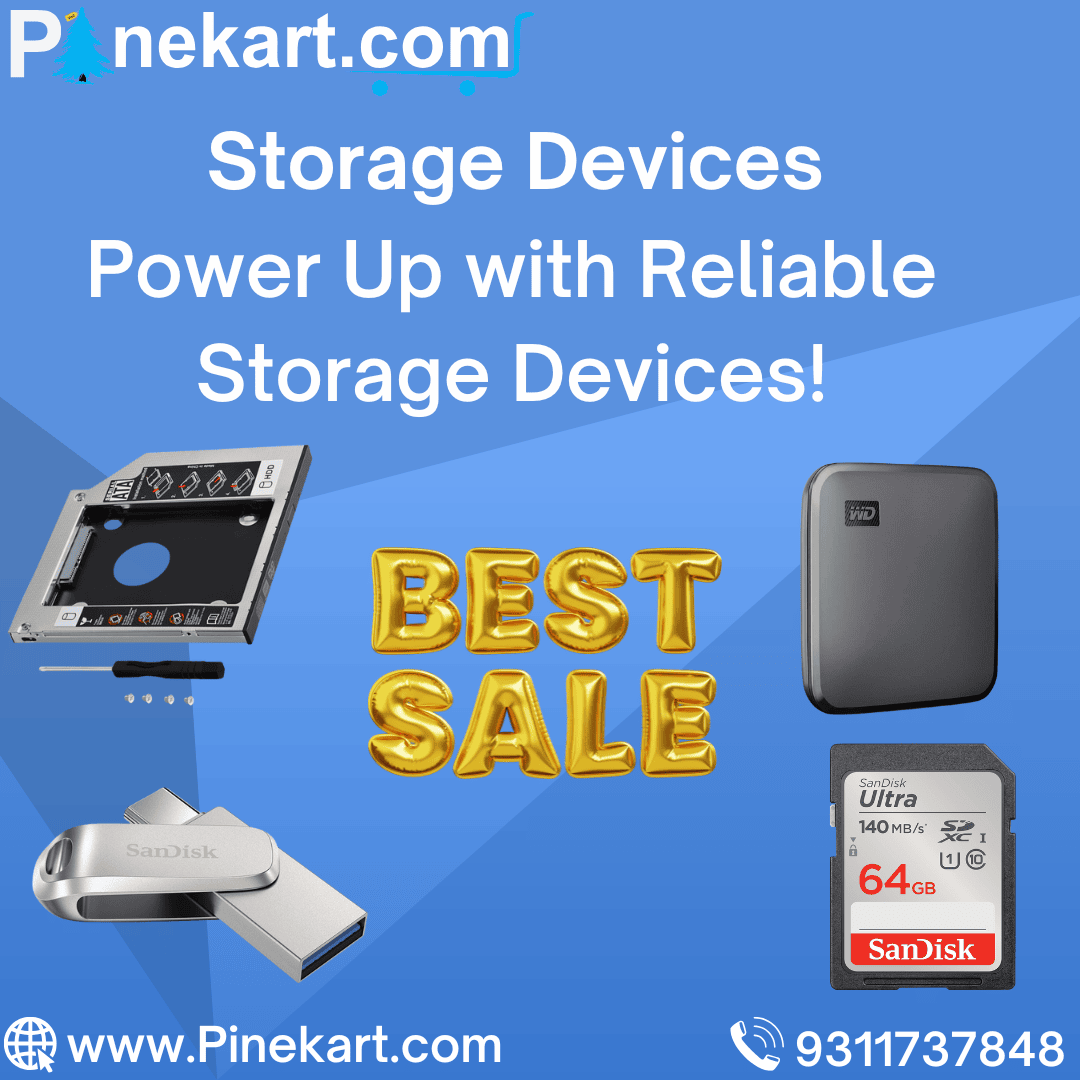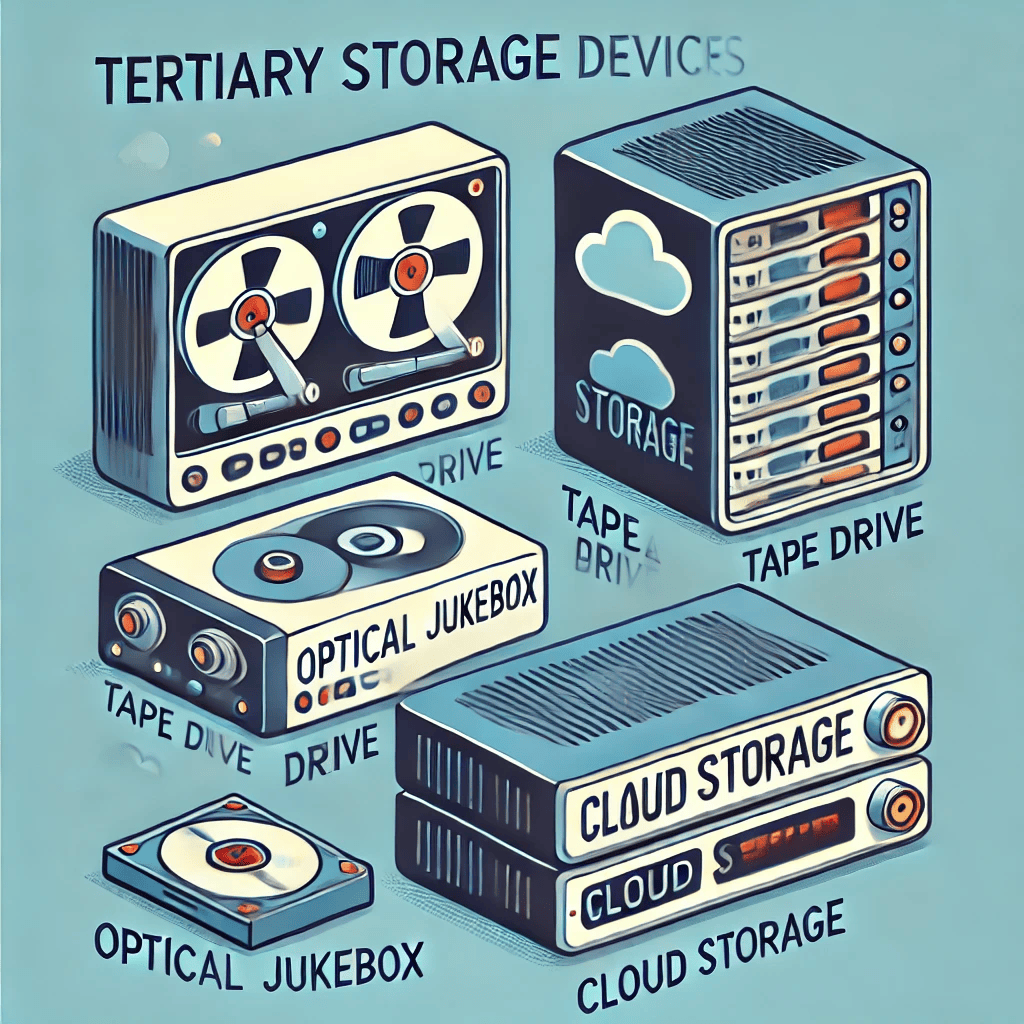In today's digital age, storage devices play a crucial role in storing, retrieving, and managing data. From personal computers to enterprise-level solutions, different types of storage devices cater to various needs. This blog explores the primary types of storage devices, their uses, and how they compare.
1. Primary Storage Devices
1. Primary Storage Devices
Primary storage devices, also known as volatile memory, provide temporary storage and fast access to data. They are essential for system performance and are directly accessible by the CPU.
a) Random Access Memory (RAM)
a) Random Access Memory (RAM)
Temporarily stores data that the CPU is actively using.
Offers high-speed data access.
Loses data when power is turned off.
b) Cache Memory
b) Cache Memory
A small, high-speed memory located inside the CPU.
Stores frequently accessed data to improve processing speed.
2. Secondary Storage Devices
2. Secondary Storage Devices
Secondary storage devices provide long-term storage and retain data even when the system is powered off.
a) Hard Disk Drive (HDD)
Uses spinning magnetic disks to store data.
Offers high storage capacity at an affordable cost.
Slower than SSDs due to mechanical parts.
b) Solid State Drive (SSD)
Uses flash memory for faster data access and better performance.
More durable and energy-efficient compared to HDDs.
Available in SATA, NVMe, and PCIe formats.
c) Pendrive (USB Flash Drive)
- Used for storing and transferring multimedia files, software, and backups.
- Pendrives offer capacities ranging from 4GB to 1TB, providing a compact, portable, and reusable storage solution.
3. Tertiary Storage Devices
3. Tertiary Storage Devices
Tertiary storage is used for long-term data archiving and backup purposes.
a) Magnetic Tape Storage
Cost-effective solution for large data storage.
Commonly used in data centers for archival purposes.
Slow retrieval speed compared to HDDs and SSDs.
4. Cloud Storage
4. Cloud Storage
Cloud storage offers remote access to data via the internet. It is managed by third-party providers and offers scalability.
a) Public Cloud Storage
Services like Google Drive, Dropbox, and OneDrive.
Provides cost-effective and scalable storage options.
b) Private Cloud Storage
Used by organizations for enhanced security and control.
Requires dedicated infrastructure and maintenance.
c) Hybrid Cloud Storage
Combines public and private cloud features.
Offers flexibility and optimized cost efficiency.
5. External Storage Devices
5. External Storage Devices
These are portable storage solutions used for backup and data transfer.
a) USB Flash Drives
Compact and portable storage with up to 2TB capacity.
Uses solid-state memory for quick data access.
b) External Hard Drives
Provides high-capacity storage options for backups and media files.
Available in HDD and SSD variants.
c) Memory Cards (SD Cards, microSD Cards)
Used in smartphones, cameras, and tablets.
Offers varying capacities ranging from 2GB to 1TB.
Frequently Asked Questions (FAQs)
Frequently Asked Questions (FAQs)
1. What is the best storage device for long-term data preservation?
Magnetic tapes and cloud storage are the best options for long-term data preservation due to their durability and scalability.
2. Is SSD better than HDD?
Yes, SSDs are faster, more durable, and energy-efficient compared to HDDs. However, HDDs are still preferred for budget-friendly, high-capacity storage.
3. How does cloud storage differ from physical storage devices?
Cloud storage provides remote access, automatic backups, and scalability, whereas physical storage devices require manual management and are prone to hardware failures.
4. What is the fastest type of storage device?
NVMe SSDs offer the fastest data transfer speeds, significantly outperforming traditional HDDs and SATA SSDs.
5. Which storage device is best for gaming?
A NVMe SSD is ideal for gaming due to its high-speed performance and quick load times.
Conclusion
Conclusion
Choosing the right storage device depends on your needs, budget, and data usage. Whether you require high-speed access, long-term archiving, or portable storage, there is a storage solution available to fit your requirements. Investing in the right technology ensures better performance, security, and efficiency in managing your data.



